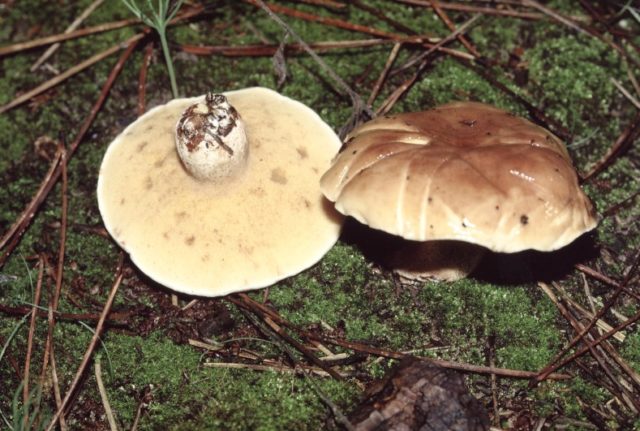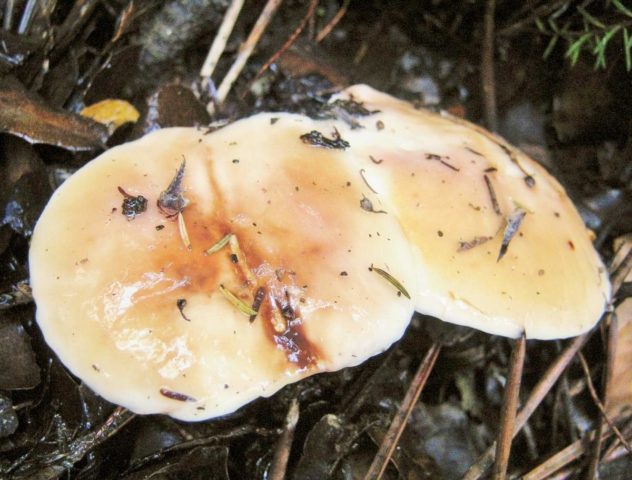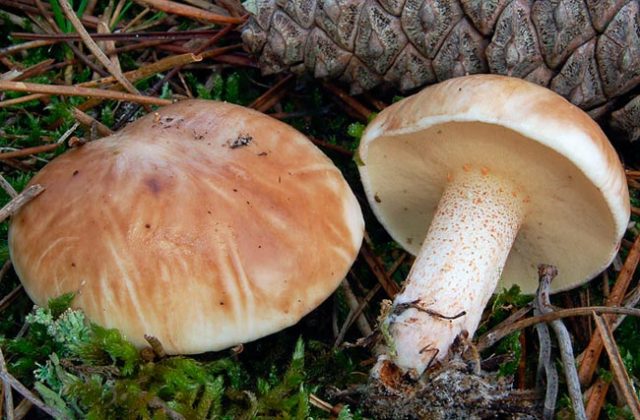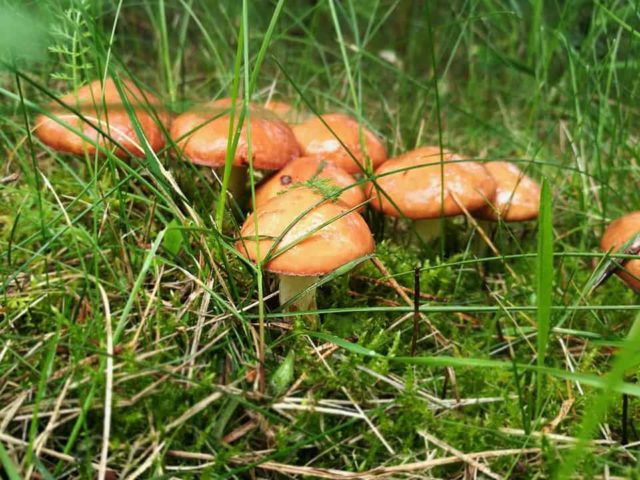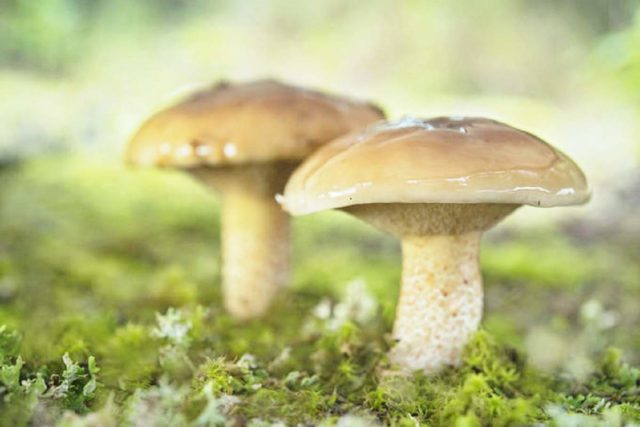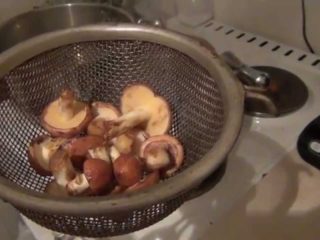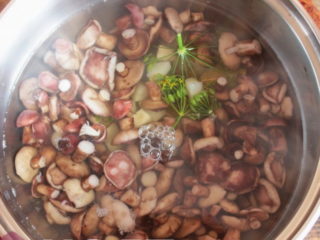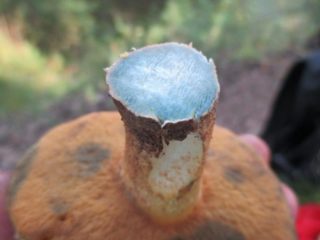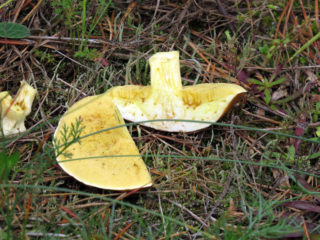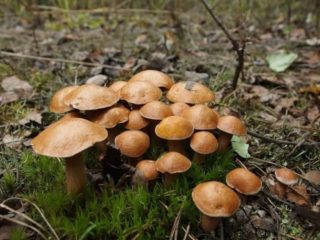Content
Bellini Butter is an edible mushroom. Belongs to the genus Maslyat. There are about 40 varieties of them, among which there are no poisonous specimens. They grow in any region of the planet with a temperate climate.
What does Bellini's oiler look like?
Mushrooms are small in size. Different types of oil are similar. A distinctive feature is a slug film on the surface of the cap, making it difficult to confuse them with other forest species.
Description of the hat
In adulthood, the size of the cap reaches 8-12 cm in diameter. The surface is even. In young specimens, it is semicircular. However, over time, it straightens, acquiring a flat-convex shape. In the center, the cap is somewhat depressed. The color, depending on the place of growth, varies from beige to light brown. The middle has a darker shade than the edging of the mushroom.
The film is dense, smooth. Separates well from the top. After a few days, the edges are wrapped inside the cap.
On the inner side, yellow-green, short plates are visible with angular spores. The tubes are elastic. It is worth making an effort to separate them from the pulp of the cap. The pores are small enough, light, but over time the color becomes yellow closer to olive. A fresh Bellini oiler has drops of white liquid. Spore powder is yellow.
Leg description
The leg height is 4-12 cm, the thickness is 1-2.5 cm. The lower part of the mushroom is short, but massive. As it matures, it stretches, acquires a cylindrical shape, narrowing towards the base. The ring is missing. The entire length of the leg surface is sticky. The color is white, beige. The leg is covered with brown or red patches.
The pulp is white, firm. In young boletus under the tubes, it is yellow. Old mushrooms have a loose, soft, brown structure. Pleasant aroma, characteristic taste.
Bellini Butter Mushroom Edible Or Not
This species is edible. For easy assimilation, the mushrooms are peeled. The bottom layer under the cap is also removed. There, as a rule, moisture accumulates, insect larvae. Leave it only in young, strong specimens. Bellini's butters age quickly. After 5-7 days, the pulp loses its taste, becomes flabby, is affected by worms, and darkens.
Where and how Bellini's oiler grows
Bellini butters love to settle in coniferous or mixed forest plantations. Often found in young pine forests, on the edges. The fruiting season begins in August and lasts until the onset of frost. It develops well on sandy soils. Significant accumulations of fungi can be seen after a warm rain. They grow more often singly or in small groups of 5-10 pieces.
Bellini oiler doubles and their differences
Bellini's oiler shares traits with other species, which can be both edible and poisonous.
Edible
- Granular butter dish. In an adult mushroom, the diameter of the cap is 10-12 cm. The color depends on the place of growth. There are yellow, brown, chestnut, brown color. The skin is sticky to the touch in wet weather. In the absence of rain, the surface of the mushroom is shiny, even, smooth. The pulp is white or light yellow. It does not darken on the cut. There is practically no smell.
- The leg is solid, elongated. The average height is 6 cm. The ring is missing. The hue changes over time from light to dark yellow. A special feature of the species is graininess at the base of the stem, as well as liquid flowing from the bottom of the cap. The fruiting season is from June to November. It is found in young pine plantations, on forest edges, clearings, glades.
- Ordinary butter dish. A common type of forest mushroom. The diameter of the cap is 5-15 cm. There are much larger specimens. When it appears, the shape of the upper part is rounded, after a couple of days it becomes flat. The hat is colored brown, chocolate or off-yellow. Feels like the surface is slimy, smooth. There are no problems with peeling. The pulp is dense, fleshy, elastic. The shade is white, light yellow. In old mushrooms, the color is closer to olive, dark green. The tubular layer is light. The pores are round, small.
- The leg is short. The maximum height is 12 cm. A light ring is visible on the leg. Above it, the flesh is white, below it is dark yellow. The growth of the fungus begins in mid-summer and lasts until the first frost. They usually germinate on the second day after rain.
The common oiler belongs to the second category of edible mushrooms. The species grows in young, mixed, pine forests. Doesn't need bright lighting. It is able to grow in darkened areas of the forest, but prefers sandy soil.
Inedible
Mediterranean butter dish. The size of the cap is 5-10 cm, it is colored red-brown, pale brown. The pulp is white or yellow. Emits a pleasant scent. The leg is straight, cylindrical. The main shade is yellow. Brown-yellow dots are marked along the length of the leg.
The mushroom is not suitable for consumption. The taste of the pulp has a high level of bitterness. Several cases of poisoning were recorded, which were accompanied by vomiting, diarrhea, and abdominal pain. They grow in warm countries: Greece, Italy, Israel. They are found mainly in coniferous forests. They settle close to a pine tree.
How are Bellini boletus mushrooms cooked?
Experienced mushroom cooks believe that this species is suitable for drying, pickling, frying. But for the ambassador - no. Although there are often recipes for salted butter.
Mushroom is a delicious and nutritious product. The pulp is used as a basis for the preparation of cutlets, meatballs. It works well in combination with vegetables. It is an ingredient in vegetable stews, soups, warm salads.
Conclusion
Bellini Butter is a tasty and healthy mushroom. Grows mainly in pine forests. Differs in ubiquitous distribution. It is widely used in cooking.

